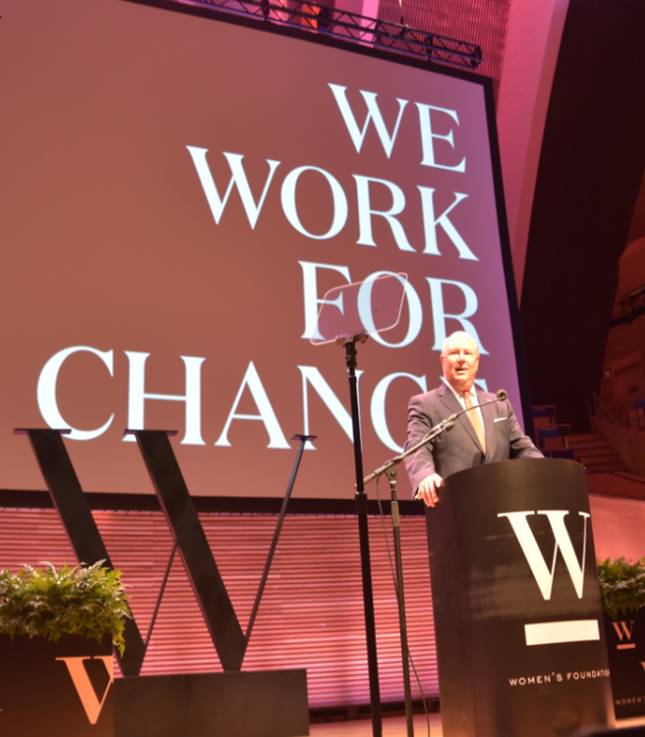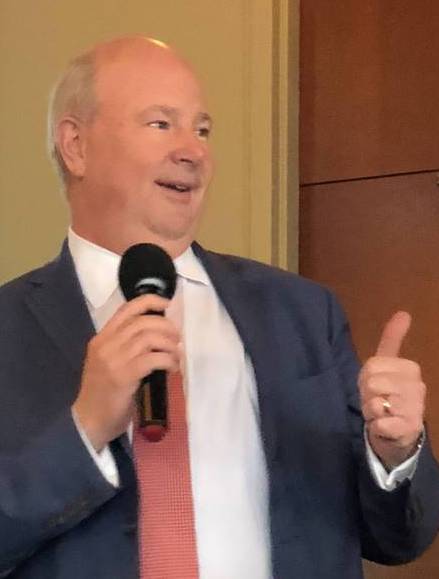How Bank of America Exec, Morgan Whitacre, Became an Advocate for Gender Equality
Note from Rania – I’m often asked how men can be advocates and allies for gender balance. Here’s a glimpse into why and how Morgan Whitacre, Head of Client Underwriting & Protection Consumer & Small Business Bank at Bank of America, champions equity.
I was blown away when I joined Bank of America five years ago and saw the level of investment and infrastructure the bank has dedicated to helping our company and communities make progress and move forward on a many social issues. I’ve worked for a number of companies over the years – some small, some large – and have never seen this level of effort and commitment to diversity. So, I raised my hand and said I want to get involved so I can do my part. I started by deepening my understanding of the issues and my role.
For me, it’s just the right thing to do—both personally and professionally. I’ve had strong female managers and leaders throughout my career, but I’ve only seen a few of them become senior executives, so I believe there’s more work to be done to create more gender-balanced leadership teams. I have two daughters—and as they start their careers in a decade or so, I want to make sure that an equitable work environment and conditions are in place so that they have an equal opportunity to rise to the top if they choose to do so.

How I got started
I took an unconscious bias course at Bank of America and had an awakening. In the program, we discussed how everyone has biases they aren’t aware of. The thing that most struck me was the recognition that I had been primarily a passive versus an active leader in terms of driving gender equity. I resolved to become more intentional and proactive.
Then I took a Catalyst course about the issues women can confront in society and that further reinforced the importance of being an active advocate which meant intentionally speaking up for and leading initiatives to achieve gender parity as well as visibly and regularly mentoring, sponsoring, championing and being an ally to women.
I think a lot of men have a journey similar to mine – they aren’t consciously aware of what’s going on and they are not active advocates. Additionally, nowadays some men have a heightened sense of concern. They are afraid of saying the wrong thing or being seen as insensitive or inappropriate.
I appreciate these worries, but the only solution is to put ourselves out there, to practice and speak up more frequently so we get better at it. I’ve received my fair share of coaching along the way from a number of colleagues when I don’t say the right thing or unconsciously say something that is wrong. That is part of growth – learning and understanding. People will see if you have the right intent and guide you – but you have to try. That’s why I’ve been encouraging men to get more informed and engaged.

Active Leadership
In addition to my responsibilities as Head of Consumer & Small Business Client Underwriting and Protection for Bank of America, I took on a company-wide leadership role as one of three co-executive sponsors of Leadership, Education, Advocacy and Development (LEAD) for Women—one of 10 employee resource groups we have at the company. Alongside my co-sponsors, we have focused our efforts on developing a comprehensive approach to attracting, developing and advancing women across the company.
We have sponsored and participated in events for our clients, communities and teammates, partnering with local women’s organizations and hosting conversations on engaging men to advocate for gender equality in the workplace.
We’re always looking for opportunities to affect change both within and outside our own organization. On my own team, I actively mentor and sponsor women leaders and encourage all my leaders to intentionally engage in driving diversity and inclusion, setting the expectation that every leader actively works to identify diverse talent among their teams.
We look carefully at our learning and leadership development opportunities and strive to broaden participation and inclusion. As an example, we used to primarily invite women to join the conversation about gender equality, and now we are proactively engaging men in the dialogue as well.
The Opportunity
At Bank of America, our commitment starts with making it a great place to work for everyone.
Today, women comprise more than 50% of the bank’s global workforce, more than 45% of our global management team, more than 40% of our managers, and more than 30% of our board of directors. Our industry-leading workplace policies include 16 weeks of paid maternity, paternity and adoption leave; financial support for adoption; back-up child and adult care and adult care services; and reimbursement for certain child care expenses.
In our most recent review of total compensation for U.S. and UK employees (approximately 80%of our global workforce), results showed that compensation received by women is equal to on average 99% of that received by men. Results also showed that compensation received by minority teammates is equal to on average 99% of that received by non-minority teammates.
We are proud to have received the Catalyst Award in 2019 and have been named on the Bloomberg Gender Equality Index for the fourth year in a row. But we know we still have much to do. We have set a high bar for ourselves and others on how we can level the playing field for men and women to succeed and lead together.
We also focus heavily on making the financial lives of our female clients and customers better by advancing the economic empowerment of women in communities around the world. Strong customers and communities lead to a stronger bank.
Get in the game
 As I mentioned, the most important thing you can do regardless of where you are on your advocacy journey is to move from being a passive advocate to being more active. Start right now looking for new ways—both personally and professionally—to act.
As I mentioned, the most important thing you can do regardless of where you are on your advocacy journey is to move from being a passive advocate to being more active. Start right now looking for new ways—both personally and professionally—to act.
You definitely can’t win the game if you don’t play, and you can only win when you are courageous and intentionally engage in the conversation. So, get in the game guys—find your position and speak up!
Are you reading to get in the game? A good place to start is knowing why women leave their places of work, how to identify and irradicate microaggressions in your workplace and how to be an advocate.